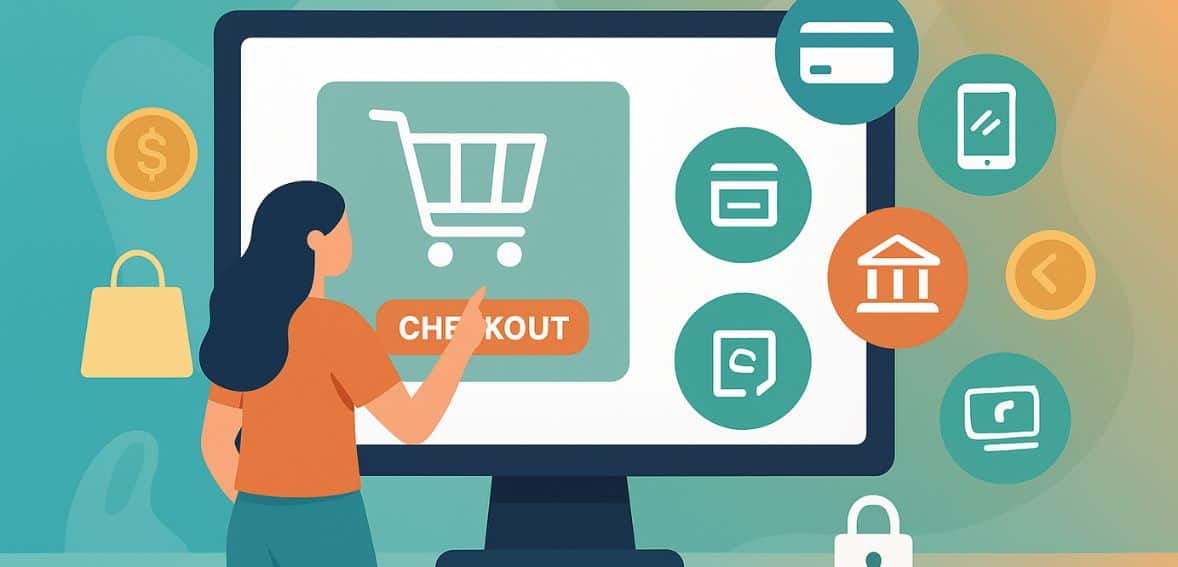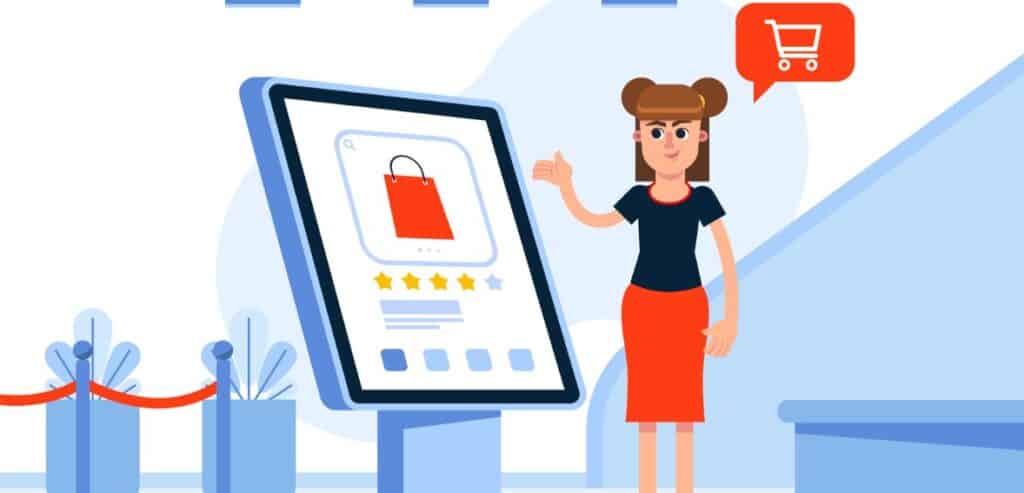
By WendyGMartinez October 1, 2025
One of the most urgent issues facing modern e-commerce is cart abandonment. Retailers invest time, effort, and resources in helping prospective customers browse, choose products, and proceed to the checkout, only to watch them abandon the process at the last minute. Limited payment options are one of the main causes of this, among many others.
Today’s consumers are dissatisfied with just one method of payment. At the time of the transaction, they anticipate choice, ease, and flexibility. Businesses can meet customer expectations, cut down on friction, and convert abandoned carts into completed purchases by providing a variety of payment options. Payment variety is a strategic investment in long-term customer loyalty, satisfaction, and trust, not just a technical advancement.
The Modern Checkout Dilemma

At checkout, enthusiasm and hesitation frequently clash. Even if a customer is prepared to buy, doubt may start to creep in when they see only one or two options on the payment page. Maybe they need buy-now-pay-later options, prefer digital wallets, or are hesitant to enter credit card information.
Any prior sales efforts could be undone by this disconnect. Customers are more likely to abandon their cart than to make a compromise when they are unable to access their preferred method, according to research. Companies that comprehend this dynamic see checkout as a critical step where flexibility directly increases conversions rather than just an endpoint.
Why Payment Variety Matters
Consumers have become used to tailored online shopping experiences. This personalization extends to the choice of payment. Paying with a credit card linked to loyalty benefits is significant to one customer. Another is that digital wallets offer security and convenience.
International shoppers may depend on local payment networks, while younger generations might favor peer-to-peer apps. Providing a variety of choices recognizes these various needs. It conveys consideration for client preferences and gives the company a customer-focused image.
However, restricting options runs the risk of offending customers. In highly competitive online marketplaces, meeting customer expectations by offering flexible payment options can mean the difference between success and lost opportunities.
Why Payment Variety Matters
Consumers have become used to tailored online shopping experiences. This personalization extends to the choice of payment. Paying with a credit card linked to loyalty benefits is significant to one customer.
Another is that digital wallets offer security and convenience. International shoppers may depend on local payment networks, while younger generations might favor peer-to-peer apps. Providing a variety of choices recognizes these various needs.
It conveys consideration for client preferences and gives the company a customer-focused image. However, restricting options runs the risk of offending customers. In highly competitive online marketplaces, meeting customer expectations by offering flexible payment options can mean the difference between success and lost opportunities.
The Link Between Abandonment and Trust
Trust issues are often the cause of checkout abandonment. Consumers may hesitate out of concern for security or possible fraud if they do not see recognizable or trustworthy payment methods.
Reassurance that transactions are secure is offered by trusted payment logos, which range from well-known credit cards to secure wallet providers. Providing a variety of reliable techniques conveys professionalism and legitimacy, highlighting the trusted payment partner.
On the other hand, even if unintentionally, a checkout page that is sparse or out-of-date may raise concerns. Companies that value payment diversity also value client trust. Showing dependability through payment options directly lowers the chance of last-minute cart abandonment in sectors where reputation is brittle and competition is intense.
Credit and Debit Cards: The Cornerstone

Credit and debit cards continue to be the foundation of online payments, even with the rise of new payment methods. They are well-known, widely acknowledged, and accepted worldwide. But even in this group, adaptability is important.
Consumers anticipate being able to pay using local networks, American Express, Mastercard, or Visa. Companies that limit acceptance to just a subset run the risk of alienating whole audience segments.
Additionally, card payments offer extra advantages like rewards programs and fraud protection, which increase their appeal. Businesses can avoid losing clients who depend on this established, reliable online payment method by keeping a strong infrastructure for card acceptance.
The Rise of Digital Wallets
The way that customers complete transactions has changed as a result of digital wallets like PayPal, Apple Pay, and Google Pay. Their speed, decreased need for card information entry, and improved security features like tokenization make them convenient.
The ability to pay with a tap or scan has made wallets the preferred method of payment for younger consumers in particular. Wallets are now necessary, not optional, for markets that prioritize mobile.
Businesses can streamline checkout and conform to modern consumer habits by supporting these tools. Ignoring digital wallets means missing out on potential sales because they represent a growing demographic that prioritizes efficiency and security.
Buy Now, Pay Later Options
Installment-based payment methods, also known as Buy Now, Pay Later (BNPL), have become increasingly popular. Customers who want instant access to goods without having to pay the full price up front are drawn to providers like Klarna, Afterpay, and Affirm. When it comes to expensive purchases, BNPL can make the difference between hesitation and completion.
Customers view these plans as cost-effective because they spread out expenses over several weeks or months. Companies that incorporate BNPL into checkout raise average order values while lowering barriers for budget-conscious consumers. Even though merchant fees might be higher, there are frequently large revenue gains as a result of the tradeoff. BNPL exhibits adaptability by meeting the changing financial needs of its customers.
Bank Transfers and Direct Payments

Direct transfers continue to be a preferred option for certain clients, particularly in areas with robust banking infrastructure. These payments are instantaneous, safe, and frequently result in reduced transaction costs for retailers.
Direct payments have become increasingly popular in Europe as a result of open banking initiatives that let consumers link their accounts at the point of sale. Companies that cater to global consumers need to be aware of these inclinations and offer options other than credit cards and wallets.
Businesses can reach customer segments that prioritize ease and security in transactions by incorporating direct bank transfers, which lowers cart abandonment brought on by incompatibilities with other payment methods.
Peer-to-Peer Payment Apps
Venmo, Cash App, and similar peer-to-peer services have evolved from personal transfers into tools for commerce. Younger demographics, in particular, value the familiarity of these platforms, often keeping balances specifically for online purchases. By incorporating peer-to-peer payment apps, businesses meet consumers where they already are financially active.
For small and medium retailers, this can also signal modernity and relevance, aligning with the habits of digital-native buyers. While not every business may need these apps, those targeting younger or socially connected audiences benefit significantly. Ignoring peer-to-peer options risks alienating a growing consumer group that equates convenience with credibility.
International Payment Methods

E-commerce knows no borders, but payments often do. Customers in different regions may rely on localized systems such as Alipay in China, iDEAL in the Netherlands, or UPI in India. When businesses neglect these systems, they inadvertently close their doors to global opportunities.
Offering localized methods communicates cultural awareness and respect for international customers. It also simplifies the buying process, as customers transact in ways that are familiar and trusted. Expanding globally requires more than shipping capabilities—it requires payment inclusivity.
By incorporating international methods, businesses reduce abandonment rates and open themselves to diverse and growing global markets.
Subscription and Recurring Payments
Some customers abandon carts not because of cost, but because they want more flexible structures. Offering recurring payment options allows customers to spread expenses over time for products or services they use regularly.
Subscription billing, installment schedules, and auto-renew features provide predictability for both customer and business. For retailers of consumables, gear, or memberships, recurring payments reduce abandonment by turning one-off hesitation into ongoing commitment.
Businesses benefit from stable, predictable revenue while customers enjoy affordability and convenience. Recurring models show that payment variety is not just about checkout—it is about adapting to lifestyle and financial rhythms.
Overcoming Technical Barriers
Integrating multiple payment methods is not without challenges. Each new system requires technical implementation, compliance, and ongoing support. Poorly executed integrations can frustrate customers, leading to abandonment rather than retention.
Smooth design, responsive interfaces, and clear instructions are essential. Mobile optimization is particularly critical, as many shoppers abandon carts when checkout pages fail to load properly on phones.
Businesses must view technical investment not as a burden, but as a necessity. The smoother the process, the more invisible payment becomes, allowing customers to focus on the excitement of their purchase rather than the mechanics of how to pay.
Security as a Non-Negotiable
No matter how many payment methods are offered, security remains paramount. Customers must trust that their data will be protected regardless of the option chosen. Secure gateways, encryption, tokenization, and compliance with PCI standards reassure customers at the critical moment of payment.
Security logos, visible trust seals, and transparent policies enhance confidence. When businesses fail to demonstrate strong security, abandonment spikes—even if variety is present. Offering multiple payment methods works only when paired with a foundation of safety. Customers who feel protected are more likely to follow through, turning checkout into a smooth and reassuring experience.
The Role of Transparency In Checkout
Beyond the payment method itself, clarity in fees, taxes, and totals plays a role in abandonment. Customers who encounter hidden costs or surprise fees at checkout often abandon, regardless of payment options.
Businesses must present full pricing transparently from the start, while showing clear payment breakdowns for methods like BNPL or recurring billing. Transparency signals honesty and professionalism, reducing friction at the final step.
Coupling multiple payment options with upfront clarity ensures that customers feel respected and informed. Together, these factors create an environment where customers can confidently complete purchases without second-guessing.
The Human Side of Checkout
It is easy to think of checkout as a technical process, but for customers it carries emotional weight. Completing a purchase is a moment of commitment, tied to excitement, anticipation, and sometimes financial stress.
Offering multiple payment methods acknowledges the human side of this experience, providing reassurance and choice. It allows customers to proceed in a way that feels safe and personal.
Businesses that understand this human dimension approach payments not as transactions, but as trust-building opportunities. By creating a checkout environment that respects emotions as well as mechanics, they transform abandonment into loyalty.
How Marketing Influences Payment Perception
Even when multiple payment methods are available, customers may not realize it unless businesses highlight them. Marketing campaigns that emphasize flexibility can reshape perception. Displaying payment logos prominently on websites, advertisements, or emails reassures customers before they even reach checkout.
Phrases like “Pay your way” or “Choose your method” signal inclusivity. When businesses frame payment choice as part of the customer experience rather than a back-end detail, they create anticipation and trust. Marketing payment variety is as important as offering it, ensuring customers know they will not face limitations when the moment of decision arrives.
The Role of Analytics in Checkout Success

Offering multiple payment methods is most effective when guided by data. Analytics reveal which methods customers use, which are underutilized, and where abandonment occurs. Businesses can refine offerings by focusing on the most impactful options while phasing out those that add little value.
Real-time monitoring also enables testing: does highlighting wallets reduce abandonment? Do customers complete purchases faster with BNPL? Analytics turn payment variety into a dynamic strategy, not a static checklist. By listening to the numbers, businesses continually improve checkout experiences, ensuring that flexibility directly contributes to measurable growth and reduced abandonment.
Preparing for the Future of Payments
The payment landscape is evolving rapidly, shaped by technology and consumer behavior. Cryptocurrencies, biometric authentication, and AI-driven financial tools are gaining ground. While not yet mainstream, these innovations point to a future where checkout will be even more personalized and seamless.
Businesses must remain adaptable, ready to incorporate emerging methods as they become viable. The lesson of today’s e-commerce environment is clear: payment flexibility reduces abandonment. The lesson of tomorrow is that evolution never stops. Companies willing to embrace change will not only reduce lost sales but also remain leaders in customer experience and satisfaction.
Conclusion
Cart abandonment represents both a challenge and an opportunity. While many factors contribute, limited payment options stand out as a preventable cause. Customers want choice, trust, and personalization when completing their purchases.
Businesses that offer multiple payment methods—ranging from cards and wallets to BNPL and local systems—remove barriers and invite completion. The process is not only technical but deeply human, tied to trust, emotion, and confidence.
By investing in variety, transparency, and security, businesses transform checkout from a point of hesitation into a point of success. In doing so, they reduce abandonment, strengthen relationships, and unlock sustainable growth in the digital marketplace.